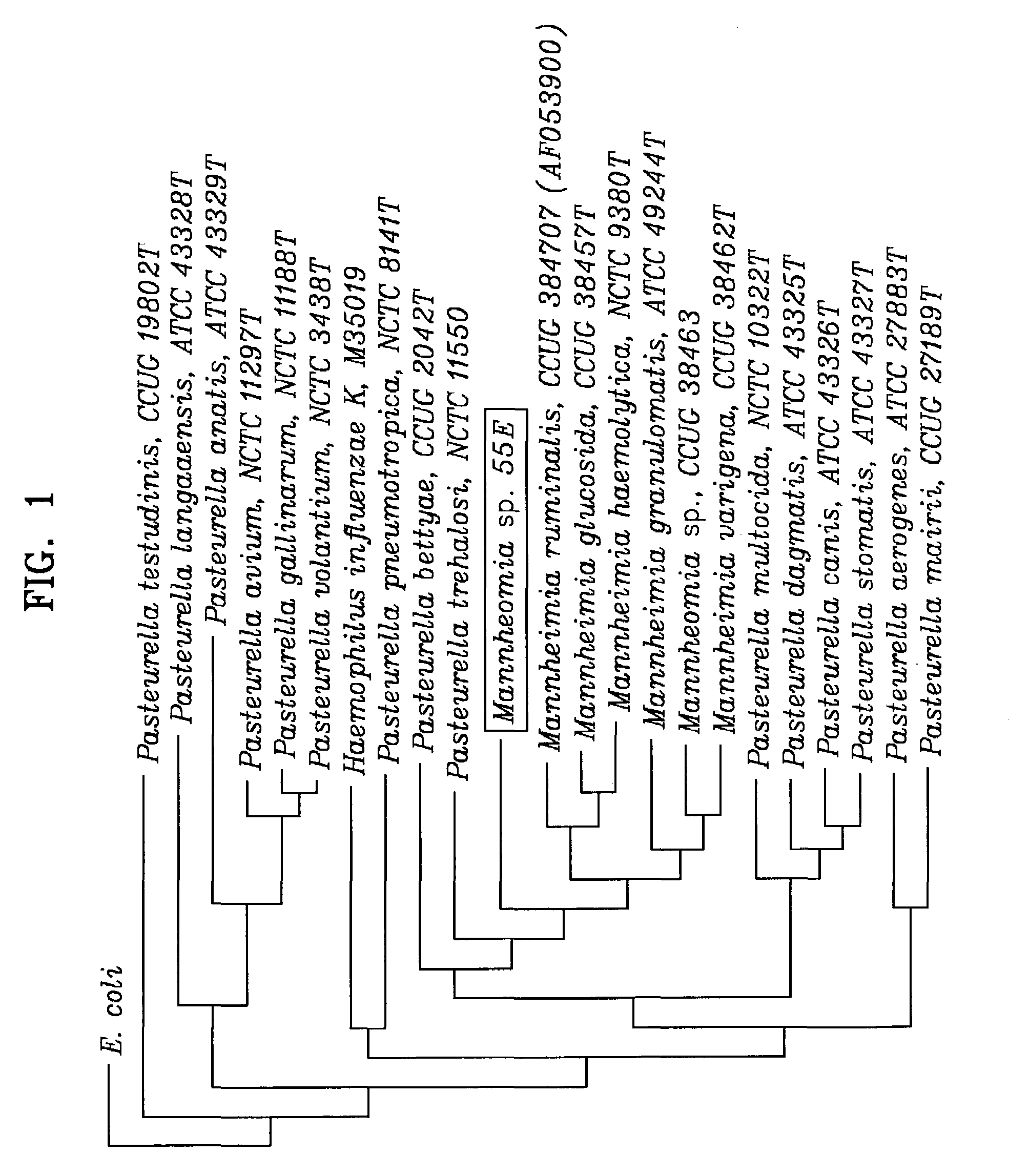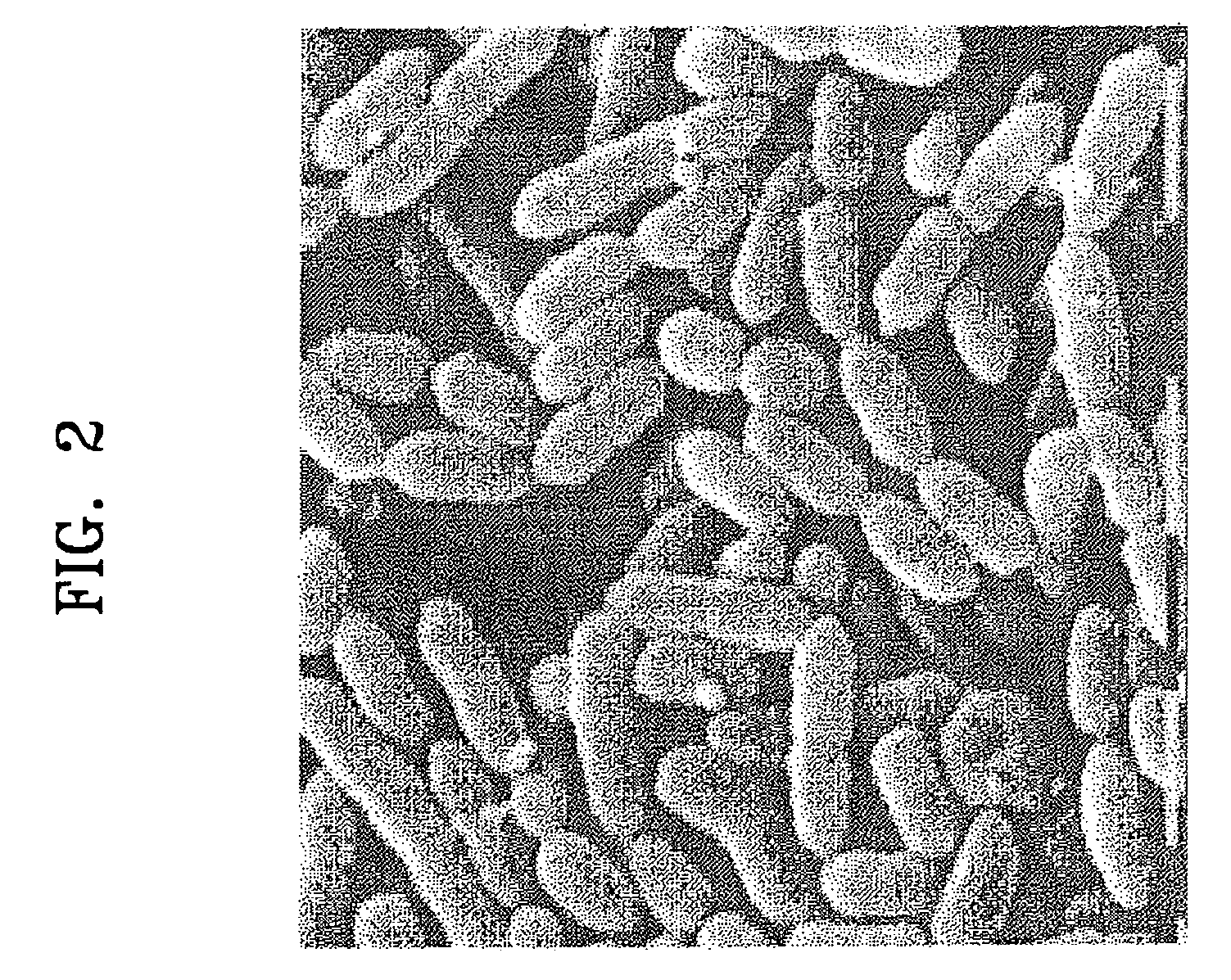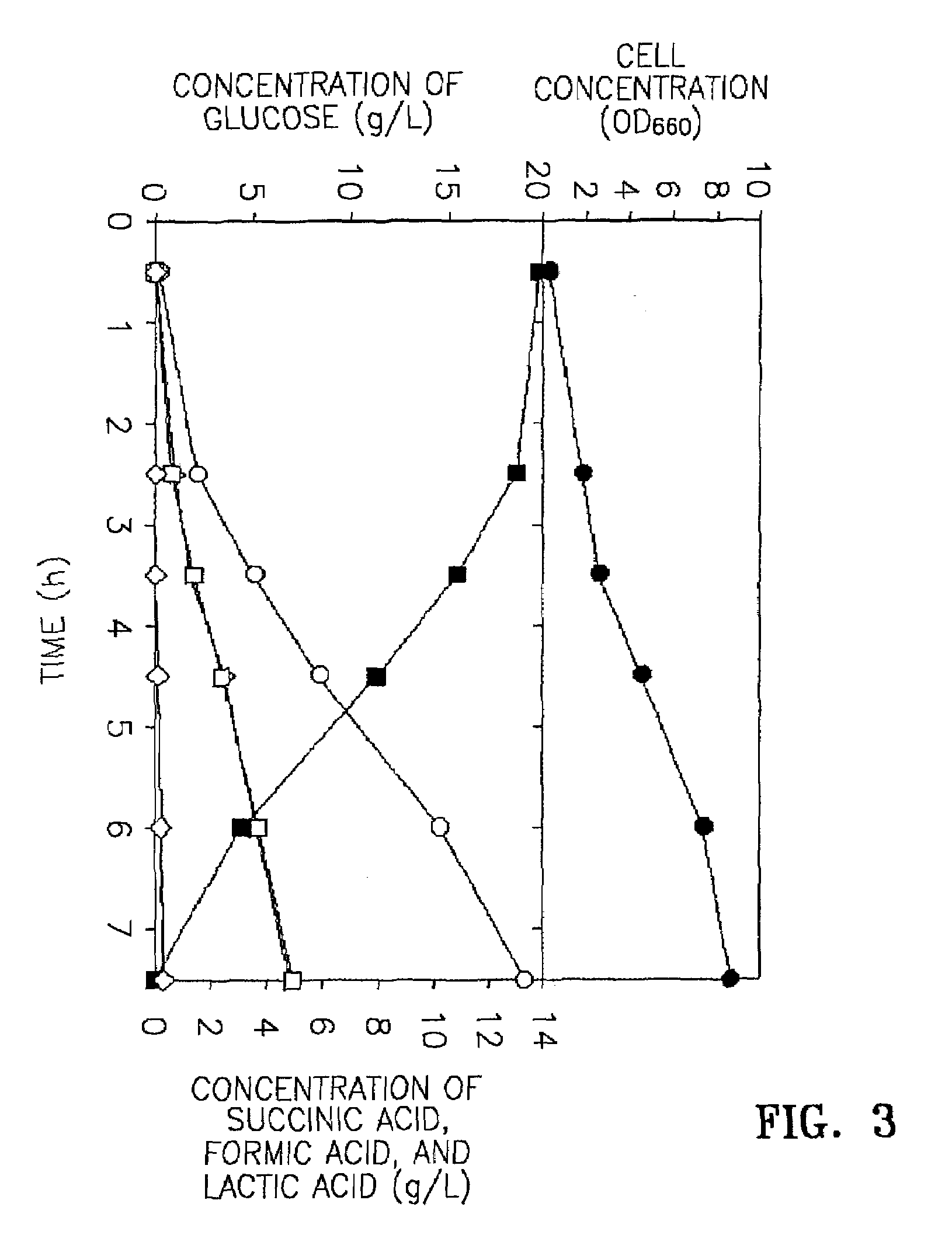Organic acid producing microorganism and process for preparing organic acids employing the same
a technology of organic acid and microorganisms, which is applied in the field of microorganisms, can solve the problems of increasing the restrictions on the production of chemical substances, requiring costly cultivation equipment, and reducing the yield of lactic acid, so as to achieve the highest yield, the effect of high yield and high yield
- Summary
- Abstract
- Description
- Claims
- Application Information
AI Technical Summary
Benefits of technology
Problems solved by technology
Method used
Image
Examples
example 1
Isolation and Identification of Mannheimia sp. 55E by 16S rDNA Sequence Analysis
[0024]1 ml of the bovine rumen fluid was subjected to 100 fold dilution with a medium consisting of 20 g of glucose, 5 g of polypeptone, 5 g of yeast extract, 3 g of K2HPO4, 1 g of NaCl, 5 g of (NH4)2SO4, 0.2 g of CaCl2.2H2O, 0.2 g of MaCl2.6H2O, and 5 g of Na2CO3 per liter, followed by plating on a 1%-agarose solid medium having the same composition as the medium above and incubation for 10 hours. Individual colonies were isolated from the cultures and transferred to and incubated in 3 ml of the above medium saturated with CO2 for 10 hours. The yield of succinic acid in the medium was measured by high performance liquid chromatography (HPLC, Aminex HPX-87H column, Bio-Rad, U.S.A.), and a strain producing succinic acid with a 50% or greater yield was screened. As a result of a physiological property assessment on the screened strain, the screened strain was found to be gram negative and non-endospore for...
example 2
Characteristics of Mannheimia sp. 55E
[0028]Mannheimia sp. 55E was cultured on a blood agar plate, which is known to be suitable for the growth of Mannheimia species, at 39° C. for 24 hours. As a result, colonies having a diameter of 1–2 mm with smooth greyish surface were observed. Single cells of Mannheimia sp. 55E were observed using a scanning electron microscope (SEM). As shown in FIG. 2, cells of Mannheimia sp. 55E appear as rods or coccobaccilli having dimensions 0.3–0.5 by 1.0 microns.
example 3
Fermentation Characteristics of Mannheimia sp. 55E Under Anaerobic Conditions Saturated with CO2
[0029]To investigate fermentation power of Mannheimia sp. 55E, it was incubated under anaerobic conditions saturated with CO2, and the reaction products were analyzed.
[0030]100 ml of a pre-culture medium consisting of 20 g of glucose, 5 g of polypeptone, 5 g of yeast extract, 3 g of K2HPO4, 1 g of NaCl, 1 g of (NH4)2SO4, 0.2 g of CaCl2.2H2O, 0.2 g of MaCl2.6H2O, and 10 g of MgCO3 per liter was prepared, and CO2 gas was supplied to the medium. Inoculation of Mannheimia sp. 55E was followed by pre-culture at 39° C. for 9 hours.
[0031]0.9 ml of a main culture medium consisting of 20 g of glucose, 5 g of polypeptone, 5 g of yeast extract, 3 g of K2HPO4, 1 g of NaCl, 1 g of (NH4)2SO4, 0.2 g of CaCl2.2H2O, 0.2 g of MaCl2.6H2O, and 10 g of MgCO3 per liter was placed inside a 2.5 L incubator. 100 ml of the pre-culture of succinic acid producing microorganism was transferred to the main culture me...
PUM
 Login to View More
Login to View More Abstract
Description
Claims
Application Information
 Login to View More
Login to View More - R&D
- Intellectual Property
- Life Sciences
- Materials
- Tech Scout
- Unparalleled Data Quality
- Higher Quality Content
- 60% Fewer Hallucinations
Browse by: Latest US Patents, China's latest patents, Technical Efficacy Thesaurus, Application Domain, Technology Topic, Popular Technical Reports.
© 2025 PatSnap. All rights reserved.Legal|Privacy policy|Modern Slavery Act Transparency Statement|Sitemap|About US| Contact US: help@patsnap.com



